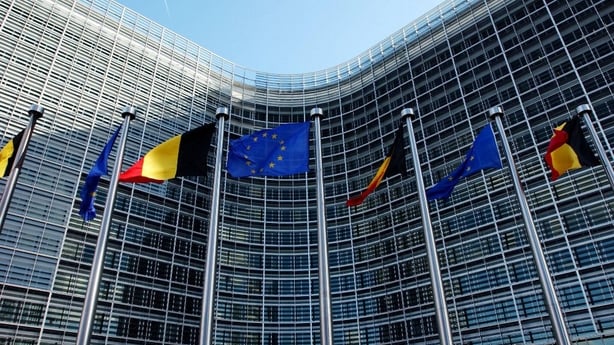The Irish economy is expected to show very strong growth over the next two years, the European Commission said today in its latest economic forecasts.
After an estimated growth rate of 6% this year, the Commission said that Irish GDP is set to slow to 4.5% in 2016 and 3.5% in 2017.
But these growth rates would still make Ireland the fastest growing euro zone country over the period.
This is in contrast to most other euro zone countries, with only Romania coming close to the predicted Irish growth rates.
The Commission said today that the euro zone will only slightly step up its economic recovery in the next two years despite lower demand for European exports in China and other emerging markets.
The euro zone is expected to grow 1.6% in 2015, with modest acceleration of gross domestic product (GDP) to 1.8% in 2016 and 1.9% in 2017, the EU executive said.
"The European economy remains on recovery course," the EU Commissioner for economic affairs, Pierre Moscovici, said in a statement.
But he also warned that "major challenges remain", as exports of European products are expected to slow down and wars and tensions persist in the region around Europe.
The expansionary monetary policy carried out by the European Central Bank and the decline of oil prices have driven euro zone growth in 2015.
However, this positive impact is fading, the Commission predicted, as it slightly reduced the 2016 growth forecasts from its previous estimates in May, when it predicted a 1.9% GDP rise in the euro zone.

Although divergences remain among the 19 countries sharing the euro, economic growth is now widespread with only Greece still in recession. Cyprus, Finland and Italy had seen contraction in 2014.
Germany, the euro zone strongest economy, will continue to grow, although at a slower pace than previously predicted, while Italy will see a faster increase of its GDP this year and in 2016.
The euro zone current account surplus will continue to increase in 2015, driven by Germany, but it is expected to narrow in next two years as oil prices are forecast to rebound.
The expected increase in oil prices is also seen as positive for the euro zone inflation, which will rise to 1% in 2016 from 0.1% in 2015, although still far from the ECB target of close to 2%.
The fiscal outlook of the euro zone is also expected to improve as some countries reduce their public deficits and debts, although France will maintain a deficit above the limits set by EU rules also in 2017, and Italy's debt is expected to rise in 2015 to 133% of GDP.
On Ireland, the Commission said the country's recovery appears resilient to weaker global growth.
It noted that domestic demand and exports, including from indigenous firms, have rebounded, bringing about record GDP growth.
However it cautioned that private and public debt levels remain high, which could create vulnerabilities to potential shocks or interest rate increases.
The Commission also said that Irish unemployment is to continue falling from 9.5% in 2015 to 8.7% next year and 7.9% in 2017.
This is in contrast to other EU countries which saw a severe economic crisis in recent years - Spain, Greece, Cyprus, Italy and Portugal. These are set to have much higher unemployment levels and this trend is expected to continue over the next two years.
The country's gross public debt is forecast to fall below the 100% level this year to 99.8%, and it will continue to fall over the next two years, the Commission said.

